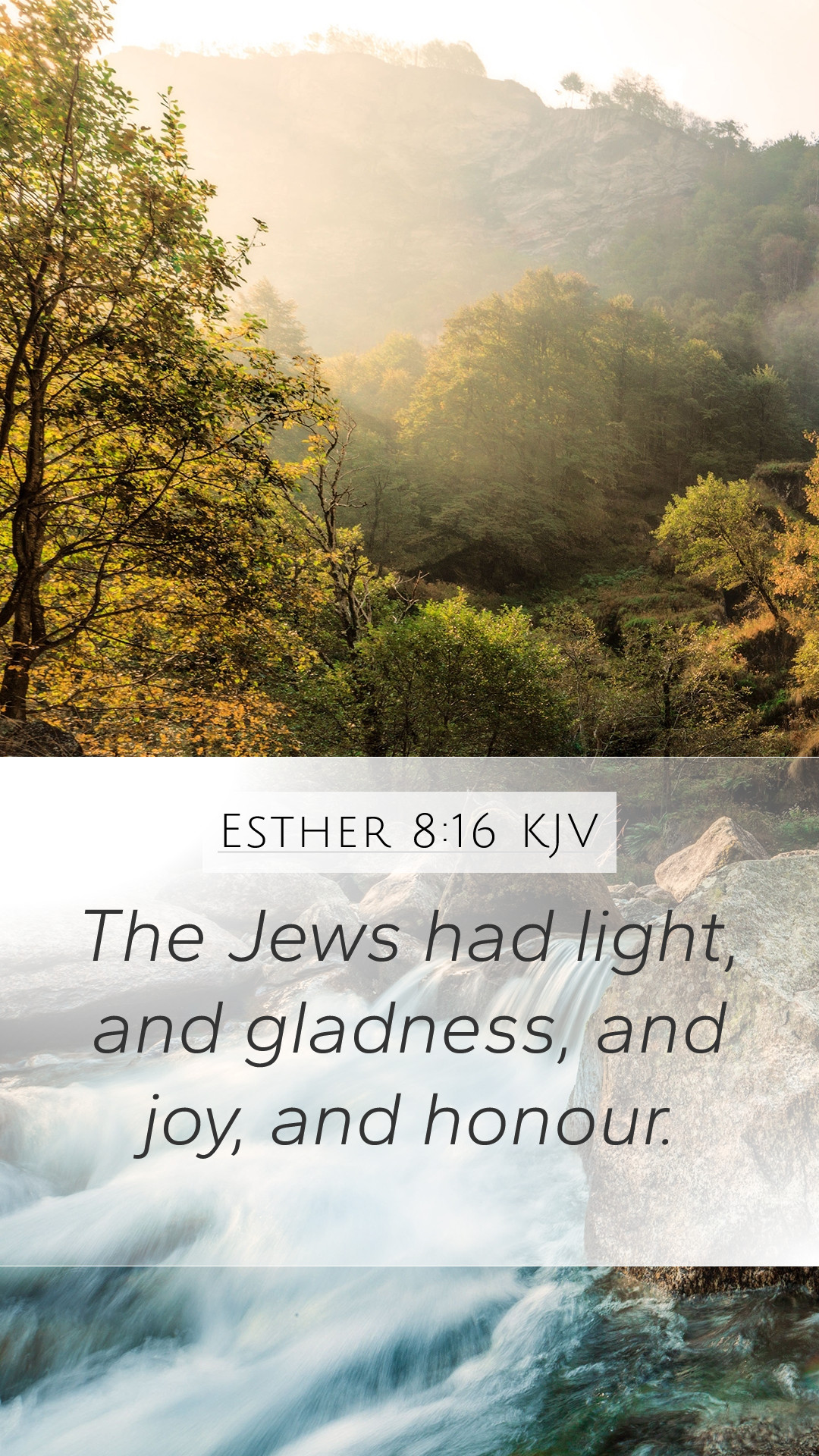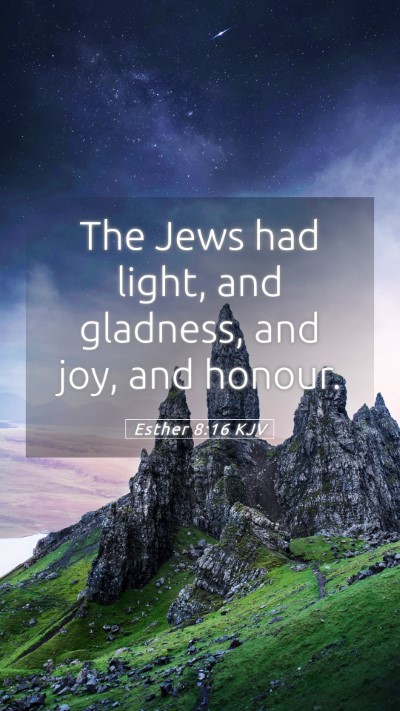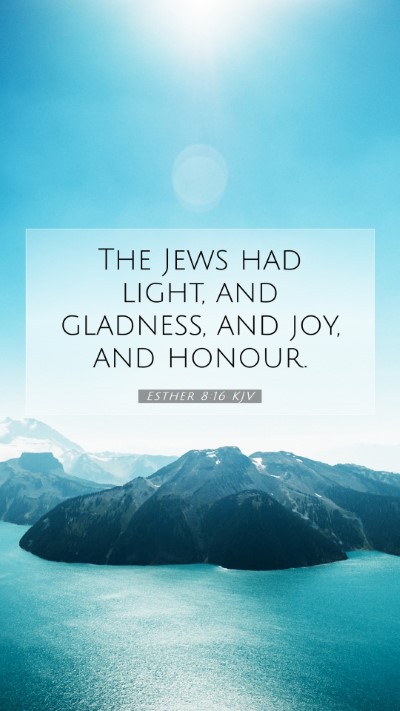Old Testament
Genesis Exodus Leviticus Numbers Deuteronomy Joshua Judges Ruth 1 Samuel 2 Samuel 1 Kings 2 Kings 1 Chronicles 2 Chronicles Ezra Nehemiah Esther Job Psalms Proverbs Ecclesiastes Song of Solomon Isaiah Jeremiah Lamentations Ezekiel Daniel Hosea Joel Amos Obadiah Jonah Micah Nahum Habakkuk Zephaniah Haggai Zechariah MalachiEsther 8:16 Meaning
What is the meaning of Esther 8:16?
The Jews had light, and gladness, and joy, and honour.
Esther 8:16 Bible Verse Meaning
Understanding Esther 8:16: A Comprehensive Bible Verse Explanation
This commentary seeks to provide insights into Esther 8:16, where the verse states:
"The Jews had light, and gladness, and joy, and honor." (Esther 8:16)
Bible Verse Meanings
The verse occurs during a pivotal moment in the Book of Esther, highlighting a significant turning point for the Jewish people. After the king's decree to allow the Jews to defend themselves against their enemies, they experience a transformation from despair to joy. The mention of "light, gladness, joy, and honor" signifies the blessings and hope that accompany their deliverance.
Key Insights from Matthew Henry
Henry emphasizes the joy of the Jewish people as they are liberated from impending doom. He elaborates that the "light" represents God's favor and guidance, resulting in a festive celebration among the Jews. This marked a reversal from the fear and scattered disposition they previously faced.
Albert Barnes' Interpretation
Barnes notes that the joyous state of the Jews was not just a personal sentiment but a public declaration of God’s providence. The use of the words "gladness" and "honor" indicates a societal recognition of the Jews' plight turned triumphant, essentially transforming their status within the empire.
Adam Clarke's Commentary
Clarke points out that these emotions were contextually rooted in the historical events surrounding their deliverance. He suggests that the joy experienced was a collective, indicating God’s mercy and ”the turning of mourning into dancing.” Clarke also alludes to the spiritual significance of light representing truth and divine insight, a pivotal theme in the Bible.
Scripture Analysis
To deepen our understanding of Esther 8:16, we should consider several layers of meaning:
- Theological Interpretation: This verse indicates God's providential care for His chosen people, reflecting on themes of deliverance and restoration.
- Cultural Context: The celebration of the Jewish people represents a shift from oppression to liberation, resonating with many historical precedents in Scripture.
- Emotional Significance: The varied expressions of joy (light, gladness, honor) encapsulate the fullness of their emotional spectrum—from despair to overwhelming hope.
Application of Bible Verse in Daily Life
The insights derived from Esther 8:16 can be employed in our daily lives. One can reflect upon:
- How to recognize moments of despair and anticipate possible deliverance.
- The transformative power of hope and joy in facing challenges.
- Understanding the communal aspect of joy and how shared experiences strengthen bonds within communities, akin to Bible study groups.
Cross References
Esther 8:16 is contextually related to the following Biblical passages, enhancing our understanding:
- Esther 4:1-3: Discusses the Jews’ mourning prior to their deliverance.
- Psalm 30:11-12: Speaks of how God turns mourning into dancing.
- Isaiah 9:2: Refers to the people walking in darkness seeing a great light.
Conclusion
Esther 8:16 serves as a beautiful representation of hope and divine intervention for the Jewish people. Through the commentaries of Matthew Henry, Albert Barnes, and Adam Clarke, we gather that the joy expressed was not merely emotional but was rooted in a historical and spiritual context of God's faithfulness. This verse and its implications form a critical part of Bible study insights and can assist individuals and Bible study groups in seeking a deeper understanding of Scripture.


